Beth Baltzan in American Affairs:
Adam Smith is often considered a libertarian icon. For that, we have Milton Friedman to thank, at least in part. Unlike the more balanced take of his Chicago School predecessors, Friedman portrayed Smith as something of a free market extremist. Friedman’s approach sparked a counterattack by scholars determined to reclaim the nuance in Smith’s ideas, and the effort to correct the record continues to this day.
Still, as we approach the 250th anniversary of the publication of Smith’s The Wealth of Nations, there remains one area in which a misunderstanding of his work persists: international trade. Friedman, perhaps the most influential economist of the second half of the twentieth century, included trade in his caricature of Smith.4 But Friedman’s rendition is flawed at its core because it ignores the real basis for Smith’s antipathy to mercantilism. Smith takes issue not with tariffs per se but with tariffs as a tool of monopoly. To Smith, the interests of the monopolist are at odds with those of the general public. He sides with the public.
The Chicago School approach, in both antitrust and trade, focuses almost exclusively on benefits to the consumer. Smith cared about the effects of monopoly rents on prices, but he saw the public as more than merely a mass of consumers longing for cheap stuff. His political economy is broader than that. It’s about power. When monopolists have too much of it, the public suffers. Smith’s free trade is not freedom from tariffs; it’s freedom from monopolists.
Unfortunately, even today, the Friedman-esque focus on the consumer reigns supreme in trade policy. Yet this myopic emphasis on consumers ended up paving the way for the “the spirit of monopoly” to reenter the trading system, even facilitating the rise of a powerful and aggressive neomercantilist state. This was the opposite of what Smith wanted.
More here.
Enjoying the content on 3QD? Help keep us going by donating now.
 A writer explores the semiotic. All artists work with signs and meanings. For me, writing is a form of semiotic sabotage. It is full of bold advances and strategic retreats, and above all it is shot through with deliberate acts of obstructionism.
A writer explores the semiotic. All artists work with signs and meanings. For me, writing is a form of semiotic sabotage. It is full of bold advances and strategic retreats, and above all it is shot through with deliberate acts of obstructionism.
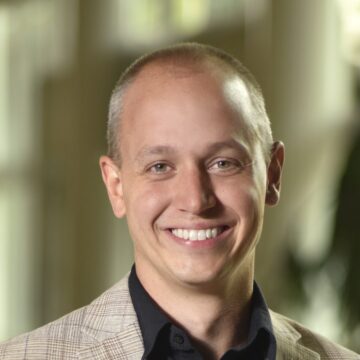 Why are people wrong all the time, anyway? Is it because we human beings are too good at being irrational, using our biases and motivated reasoning to convince ourselves of something that isn’t quite accurate? Or is it something different — unmotivated reasoning, or “unthinkingness,” an unwillingness to do the cognitive work that most of us are actually up to if we try? Gordon Pennycook wants to argue for the latter, and this simple shift has important consequences, including for strategies for getting people to be less susceptible to misinformation and conspiracies.
Why are people wrong all the time, anyway? Is it because we human beings are too good at being irrational, using our biases and motivated reasoning to convince ourselves of something that isn’t quite accurate? Or is it something different — unmotivated reasoning, or “unthinkingness,” an unwillingness to do the cognitive work that most of us are actually up to if we try? Gordon Pennycook wants to argue for the latter, and this simple shift has important consequences, including for strategies for getting people to be less susceptible to misinformation and conspiracies.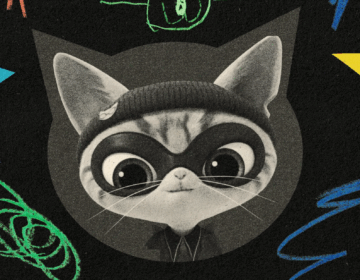 In most superhero stories, the villains are so deranged or evil that they operate outside the boundaries of society. “SuperKitties” and its ilk focus on characters who do bad things from within the boundaries of society: Their actions are hurtful or wrong, but they were committed because the character believed they were reasonable or permitted. Children may get more out of this type of character because this is exactly the kind of conflict they experience with parents, siblings and classmates; it is even a situation they may find themselves in, having done something that seemed fun or helpful only to receive a scolding, warning or lecture in response.
In most superhero stories, the villains are so deranged or evil that they operate outside the boundaries of society. “SuperKitties” and its ilk focus on characters who do bad things from within the boundaries of society: Their actions are hurtful or wrong, but they were committed because the character believed they were reasonable or permitted. Children may get more out of this type of character because this is exactly the kind of conflict they experience with parents, siblings and classmates; it is even a situation they may find themselves in, having done something that seemed fun or helpful only to receive a scolding, warning or lecture in response. When Robert Hooke gazed through his microscope at a slice of cork and coined the term ‘cell’ in 1665, he was really looking at just the walls of the dead cells. The squishy contents typically found within would become objects of ongoing study. But for many plant scientists, the walls themselves faded into the background. They were considered passive containers for the exciting biology inside.
When Robert Hooke gazed through his microscope at a slice of cork and coined the term ‘cell’ in 1665, he was really looking at just the walls of the dead cells. The squishy contents typically found within would become objects of ongoing study. But for many plant scientists, the walls themselves faded into the background. They were considered passive containers for the exciting biology inside.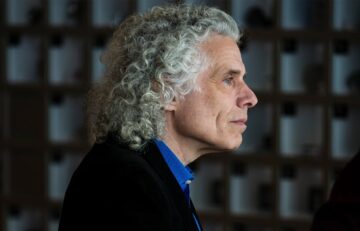 How do we know when others know what we know? Harvard psychologist Steven Pinker’s latest book, When Everyone Knows That Everyone Knows, delves into how ‘common knowledge’ can cement or explode social relations. Common knowledge — awareness of mutual understanding — can explain the
How do we know when others know what we know? Harvard psychologist Steven Pinker’s latest book, When Everyone Knows That Everyone Knows, delves into how ‘common knowledge’ can cement or explode social relations. Common knowledge — awareness of mutual understanding — can explain the  G
G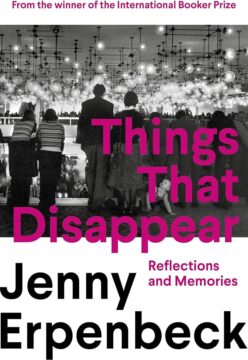 Each time I take a long trip, I lose at least one scarf or hat, sometimes even a pair of sunglasses or a watch. I’ve also lost a number of things when moving house: a piece of moulding from an old rustic wardrobe, a few blinds, and once I even lost the typewriter I used to write my first works. Although the hotel rooms I left were small, and the apartments I left were clearly empty, the things were still missing later; somehow, somewhere, they had disappeared in the no man’s land between departure and arrival, it happened so regularly that I began to expect it when packing my suitcase or my boxes, as if it were a sacrifice, a price I had to pay for the change in my circumstances, and in that respect, despite all the randomness, it was still appropriate. However, in the course of my everyday life, the number of things around me never decreased, but rather increased, the piles grew higher, the folders thicker, I could imagine that a fire would break out and I would tuck my diaries, letters, and photo albums under my arm and run out of the house, but fortunately no fire broke out.
Each time I take a long trip, I lose at least one scarf or hat, sometimes even a pair of sunglasses or a watch. I’ve also lost a number of things when moving house: a piece of moulding from an old rustic wardrobe, a few blinds, and once I even lost the typewriter I used to write my first works. Although the hotel rooms I left were small, and the apartments I left were clearly empty, the things were still missing later; somehow, somewhere, they had disappeared in the no man’s land between departure and arrival, it happened so regularly that I began to expect it when packing my suitcase or my boxes, as if it were a sacrifice, a price I had to pay for the change in my circumstances, and in that respect, despite all the randomness, it was still appropriate. However, in the course of my everyday life, the number of things around me never decreased, but rather increased, the piles grew higher, the folders thicker, I could imagine that a fire would break out and I would tuck my diaries, letters, and photo albums under my arm and run out of the house, but fortunately no fire broke out. Whether I like it or not, the first line of my obituary will probably be that I was the founding editor of
Whether I like it or not, the first line of my obituary will probably be that I was the founding editor of  “The classic example of a hijack is masturbation,” Edward Slingerland tells me. We’re talking about all the evolutionary quirks that humans tend to exploit — the cases where we’re “built” for one purpose, but decide to put that structure to other uses. And masturbation is a classic example.
“The classic example of a hijack is masturbation,” Edward Slingerland tells me. We’re talking about all the evolutionary quirks that humans tend to exploit — the cases where we’re “built” for one purpose, but decide to put that structure to other uses. And masturbation is a classic example.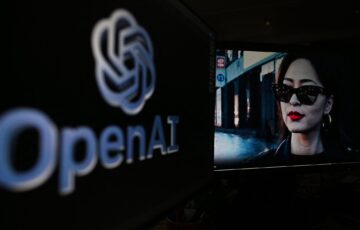 In its first three days, users of a new app from OpenAI deployed artificial intelligence to create strikingly realistic videos of ballot fraud, immigration arrests, protests, crimes and attacks on city streets — none of which took place.
In its first three days, users of a new app from OpenAI deployed artificial intelligence to create strikingly realistic videos of ballot fraud, immigration arrests, protests, crimes and attacks on city streets — none of which took place.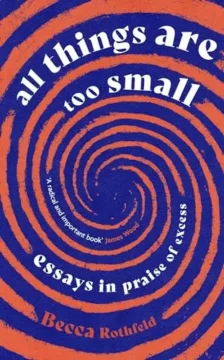 Complaints about the state of criticism are a very old story. But nothing I’ve read—from indictments published decades ago by Cyril Connolly, Elizabeth Hardwick, Clement Greenberg, and Gore Vidal to James Wolcott’s evisceration of cultural coverage at The New York Times in a recent issue of Liberties—can top Ian McKellen’s howl for what we’ve lost, telegraphed through every twist and turn of his performance as the curmudgeonly theater critic Jimmy Erskine in The Critic (2023).
Complaints about the state of criticism are a very old story. But nothing I’ve read—from indictments published decades ago by Cyril Connolly, Elizabeth Hardwick, Clement Greenberg, and Gore Vidal to James Wolcott’s evisceration of cultural coverage at The New York Times in a recent issue of Liberties—can top Ian McKellen’s howl for what we’ve lost, telegraphed through every twist and turn of his performance as the curmudgeonly theater critic Jimmy Erskine in The Critic (2023). On Day 3, I started seeing Rothkos. Immersed in darkness, I was hallucinating abstract expressionism, smears of pink and blue pulsing through what I knew to be a room in Massachusetts, though it was also a cave and somehow a black hole. A strange inner cinema comes online after enough time in absolute blackness, a kind of backup generator for imagery. I sat. Had sat for hours. It was daytime, or maybe nighttime, one of the big two. Was I unraveling? Raveling? What did I know for sure? I knew to breathe: Om ah hum. If I truly freaked, I could find the door. I didn’t want the door. I wanted to boil existence down, see what remained.
On Day 3, I started seeing Rothkos. Immersed in darkness, I was hallucinating abstract expressionism, smears of pink and blue pulsing through what I knew to be a room in Massachusetts, though it was also a cave and somehow a black hole. A strange inner cinema comes online after enough time in absolute blackness, a kind of backup generator for imagery. I sat. Had sat for hours. It was daytime, or maybe nighttime, one of the big two. Was I unraveling? Raveling? What did I know for sure? I knew to breathe: Om ah hum. If I truly freaked, I could find the door. I didn’t want the door. I wanted to boil existence down, see what remained.